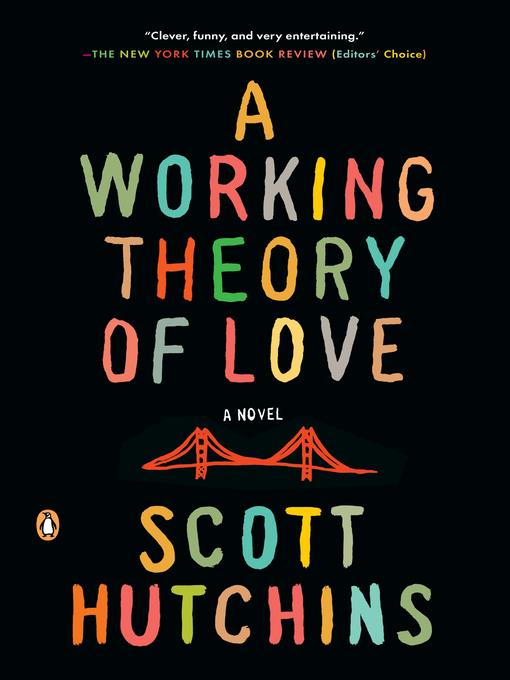
A Working Theory of Love
کتاب های مرتبط
- اطلاعات
- نقد و بررسی
- دیدگاه کاربران
نقد و بررسی

August 13, 2012
In Stegner Fellow Hutchins’s ambitious debut novel, the writings of Dr. Neill Bassett, who committed suicide in 1995 and kept extensive diaries for two decades, form the basis of a linguistic project to create the first software program to process natural language. Though the doctor’s son, Neill Jr., is not a programmer, he’s the only native English speaker at Amiante, the tiny three-man tech firm taking on the task, and his job entails humanizing the program so that it responds like a real person rather than a computer. During the course of the project, the emotionally distant Neill, a divorced 36-year-old living in San Francisco who thinks of himself as “an experienced practitioner at the art of falling apart on the inside while appearing catatonic,” becomes involved with Rachel, a 20-year-old member of a cultlike group that employs questionable methods to engage its members. The relationship never sizzles because Rachel remains a cipher, but Neill’s interactions with the software, which becomes more and more a stand-in for his dead father, and a rival software developer’s provocative end-use plans for a successful Bassett-like program, create intriguing ethical dilemmas and force Neill out of his indifference. Neill’s unusual “one-on-one” with the program is revelatory and exciting. Agent: Bill Clegg, WME Entertainment.

September 15, 2012
Artificial intelligence meets the questing of the human heart in an ambitious, accomplished debut. Hutchins' impressive if overlong first novel hinges on an ironic setup that delivers multiple layers of cherishable content. His hero, Neill Bassett Jr., is working on a computer program derived from the diaries of a "Samuel Pepys of the South," helping to create the world's first intelligent machine. These diaries were written by Neill's father, so the many conversations between Neill and the computer offer rich opportunities for comedy and rueful reflection, as well as comparisons between Neill's life to date--divorced, lonely, 30-something bachelor--and his father's achievements as parent, homeowner and doctor, although while the computer program is able to figure out Neill is its "son," what it doesn't know is that Dr. Bassett Sr. committed suicide. Constant debate about and adjustments to the program lend a minor element of pace--the Turing prize is at stake--meanwhile, Neill muses on his father, relationships with various females and a cult called Pure Encounters. Suspicious that he's really a beta-male, Neill journeys skeptically toward connection as Hutchins plays simultaneously with ideas and language, sex and psychology, capturing the angst and insularity of modern urban life. Clever and extensive navel-gazing is modulated by tenderness, humor and charm. A writer to watch.
COPYRIGHT(2012) Kirkus Reviews, ALL RIGHTS RESERVED.

May 1, 2012
Despite a complete lack of computer science credentials, Neill Bassett works for the artificial intelligence company Amiante Systems, inputting his father's dull but monstrously detailed journals into what the company hopes will be the first sentient computer. Then the computer obliges by asking disturbing questions about Neill's childhood. A conversational first novel from a Truman Capote Fellow at Stanford's Wallace Stegner program; watch it.
Copyright 2012 Library Journal, LLC Used with permission.

September 1, 2012
Neill Bassett Jr. attempts to parse relationships, family ties, and his own legacy, or lack thereof, in this first novel, a deadpan serious look at the life of one modern worker searching for meaning in an increasingly banal world. Neill thought his relationship with his father ended while he was in college, when the senior Neill committed suicide. But the lasting, haunting inheritance from his father is an endless barrage of internal questions, vague guilt, a life Neill lives on the sidelines (more via technology than messy real-life interactions), and the sneaking suspicion that his father has been reincarnated in the guise of a supercomputer. Talking to the computer, known as Dr. Bassett and linguistically powered by the diaries Neill's father left behind, makes Neill feel as if he is constantly trying to catch his attention, shaking him awake much, one suspects, as he did with his actual father. When he meets a young woman, Rachel, under deliberate yet unexpected circumstances, more pathways open for him to explore all the reasons we harden our hearts and how to soften them again, before it's too late.(Reprinted with permission of Booklist, copyright 2012, American Library Association.)

























دیدگاه کاربران